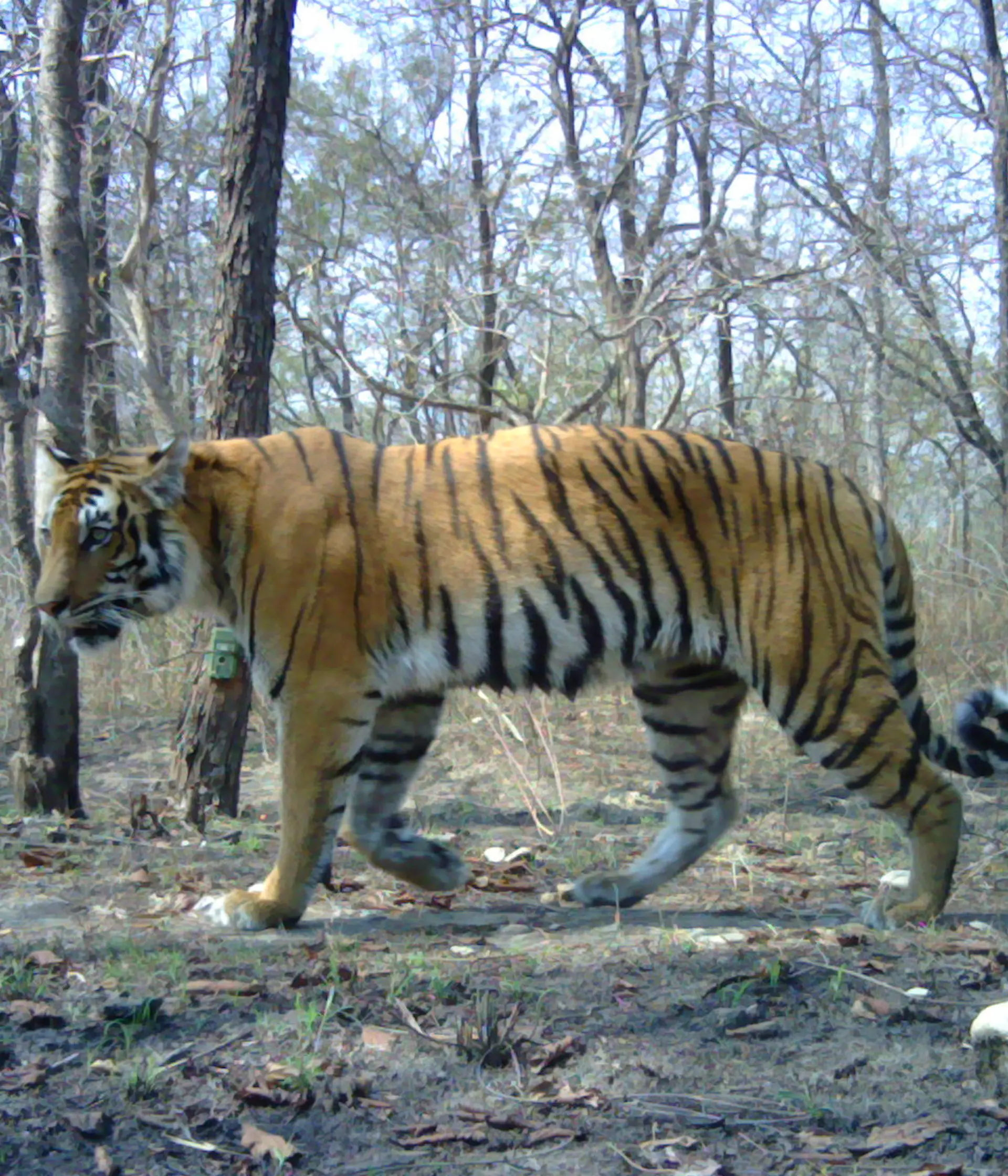
ZSL
Zoological Society of London
Endangered tiger numbers have nearly doubled in Parsa Wildlife Reserve in Nepal in just three years, thanks to conservation efforts led by the Department of National Parks and Wildlife Conservation, supported by the National Trust for Nature Conservation (NTNC) and ZSL.

Survey figures released on International Tiger Day (July 29), show that Endangered Bengal tiger (Panthera tigris) numbers have risen dramatically since the Society and its partners began their important conservation work in the Chitwan-Parsa tiger complex in 2014.
ZSL collaborated with The Government of Nepal’s Department for National Parks and Wildlife Conservation (DNPWC), the National Trust for Nature Conservation (NTNC) and Panthera, the global wild cat conservation organisation, to carry out the 2016 survey in Parsa - as part of their ongoing partnership to protect and monitor tigers throughout the lowlands of Nepal.
ZSL’s Conservation Programmes Director, Professor Dr Jonathan Baillie said: “Success for tiger conservation requires viable habitats, stringent protection, effective monitoring and community engagement and when those conditions are in place, tiger numbers will flourish as Parsa Wildife Reserve in Nepal has demonstrated very clearly. Nepal’s exemplary track record in conserving its iconic wildlife makes it a conservation leader in the South Asian region.”
Today, just 3,900 wild tigers remain in all of Asia, largely due to poaching for the illegal wildlife trade. In 2013 Nepal was estimated to support 198 Bengal tigers; the latest survey confirms that Parsa is now home to approximately 90% more.
Nepal’s Director General of the Department of National Parks and Wildlife Conservation Krishna Prasad Acharya said: ‘The tiger population in Parsa Wildlife Reserve has significantly increased since the last census, this is fantastic news for tigers and it demonstrates that Nepal’s dedicated conservation efforts are delivering clear results. Nepal has committed to doubling its tiger population by 2022 and encouraging results like these show that we are on track to achieve that.”

Panthera Senior Tiger Program Director, Dr. John Goodrich, stated: “The impressive doubling of tigers in Parsa, and the almost unprecedented speed of this recovery, is testament to how law enforcement and strong government leadership can help save the species. At a time when poachers are waging an all-out war against wildlife, Nepal serves as a beacon of hope for the tiger.”
Goodrich continued: “The country’s conservation model and the courageous spirit of those working to protect Nepal’s natural heritage, particularly given the devastating earthquake of April 2015, must be celebrated and replicated to ensure the tiger lives on throughout Asia.”
The Chitwan-Parsa complex - made up of Chitwan National Park and the Parsa Wildlife Reserve -contains nearly 2000 km2 of contiguous tiger habitat and is one of the highest priority landscapes for conservation in Nepal.
Since 2014, ZSL and Panthera have collaborated in the Parsa Wildlife Reserve to monitor tigers and their prey using camera traps, and provide training for effective law enforcement training and the use of the SMART system - a computer-based platform that improves the effectiveness of wildlife patrols.
Parsa is also a trial site for innovative conservation technologies which have been effectively deployed to provide valuable information to park managers including ZSL’s seismic and magnetic sensors and Panthera’s PoacherCam – a remote camera that distinguishes people from wildlife and can transmit images to law enforcement, to stop poaching.
ZSL in partnership with the DNPWC has also recently equipped and supported the deployment of a state of the art Rapid Response Patrol team in PWR which further strengthens the park management’s capacity to prevent tiger poaching before it takes place.
Over the next few years ZSL and Panthera plan to expand their conservation efforts to three other protected areas that are home to tigers in the lowlands of Nepal with Nepal’s DNPWC as the lead and with full support of our national partner NTNC.
Climate change and human activity have pushed our precious planet to its limit, causing the devastating loss of so many habitats and species. From lab to field, hands on and behind the scenes, we’re leading the future of conservation, shaping agendas and influencing change to support better life, health and living for people and wildlife.
